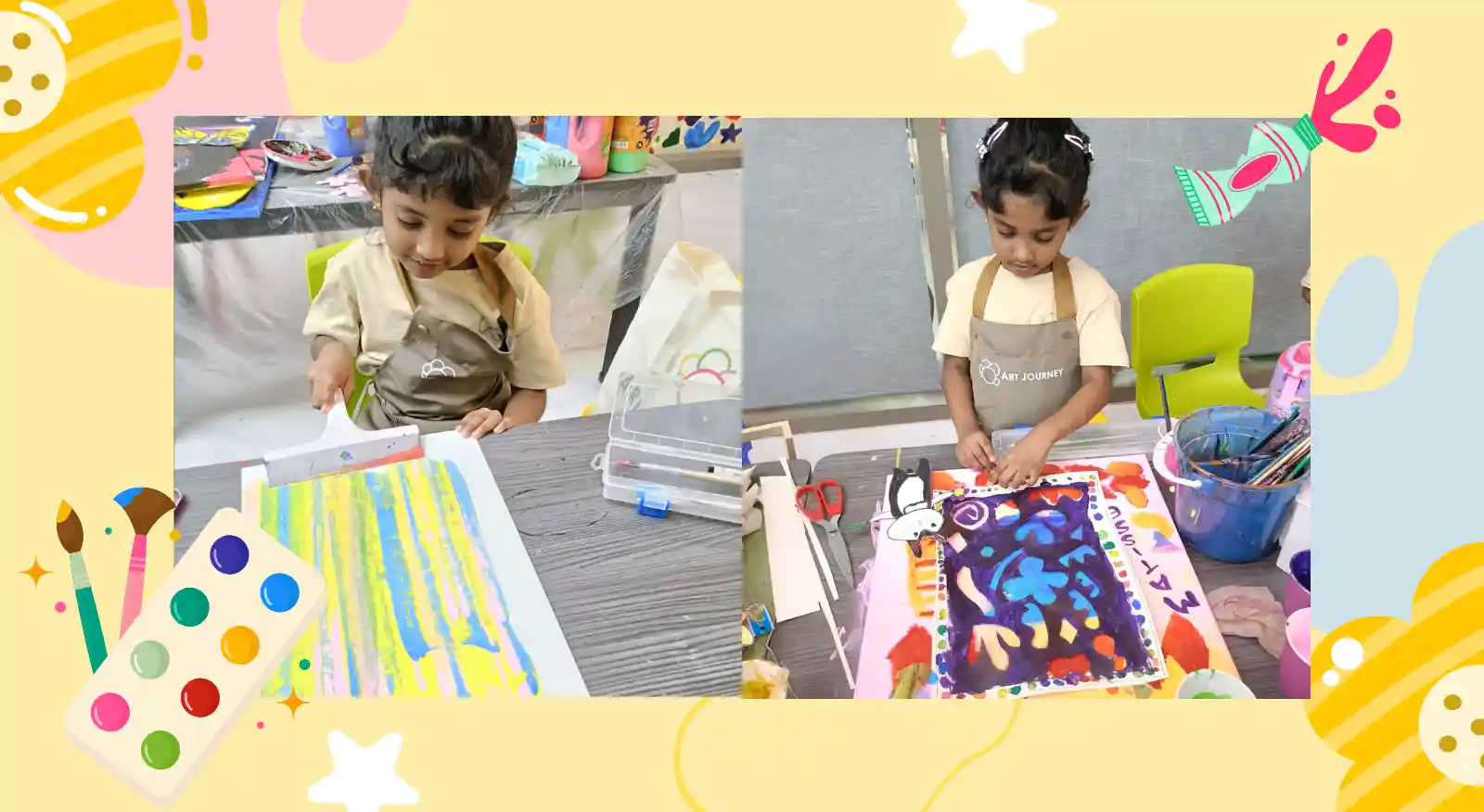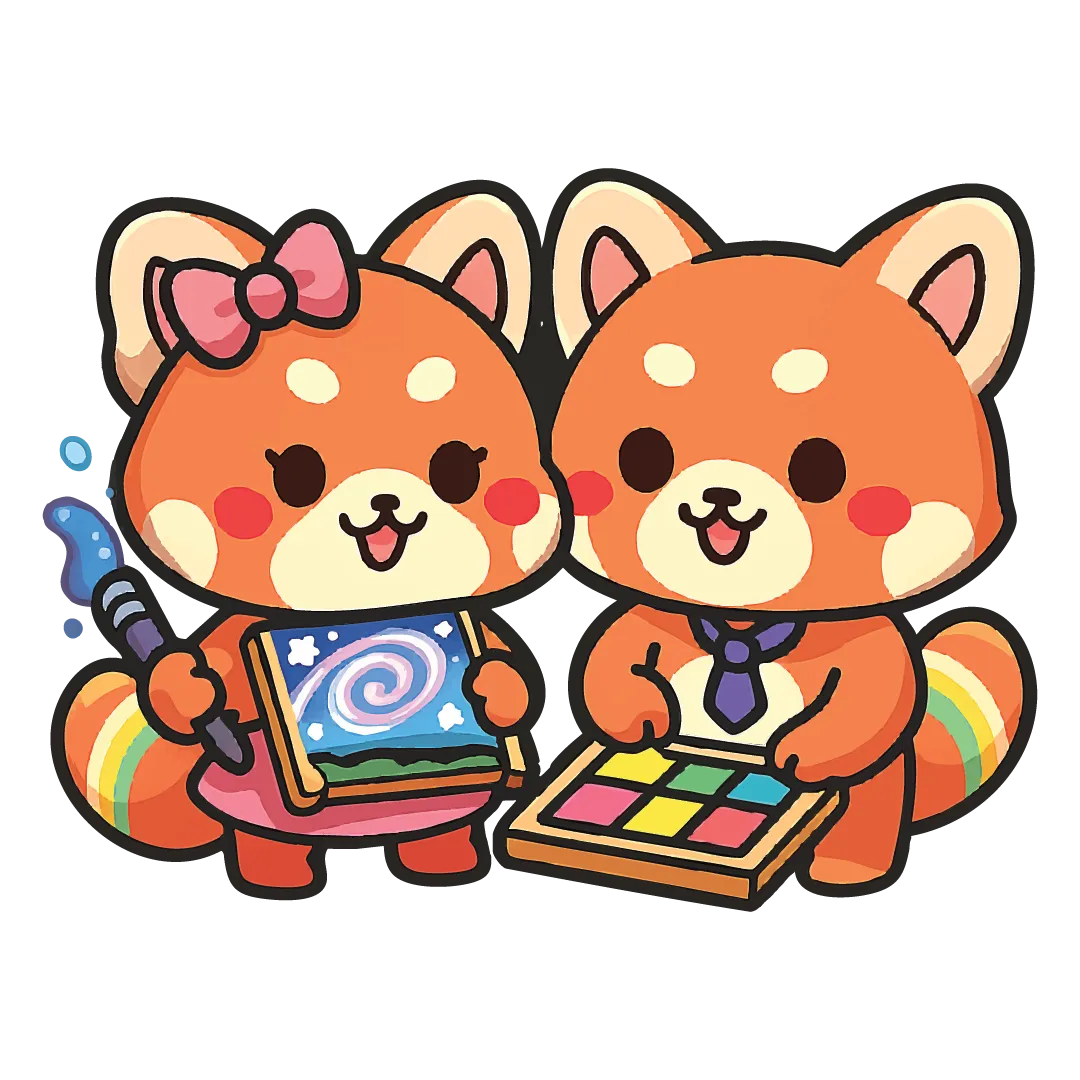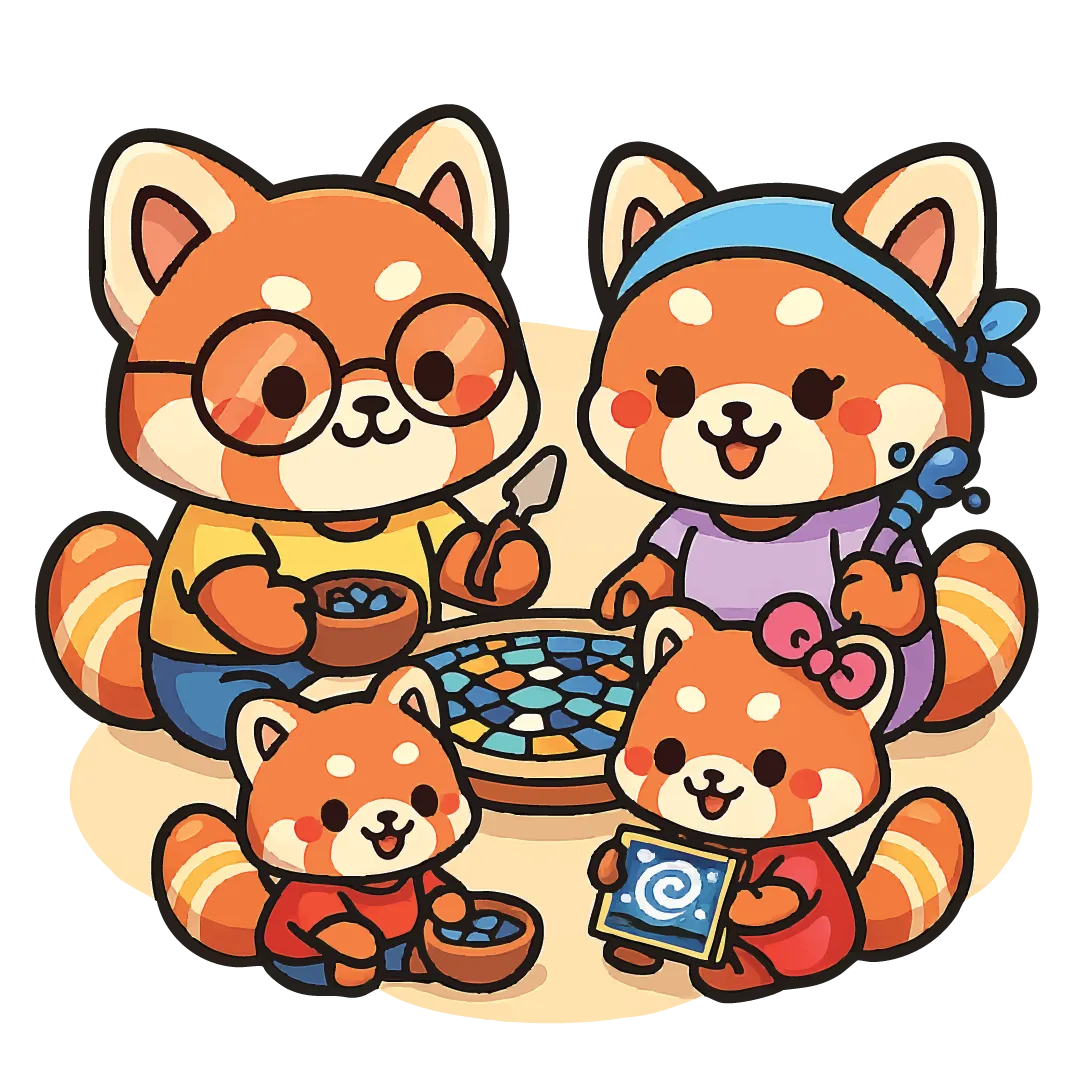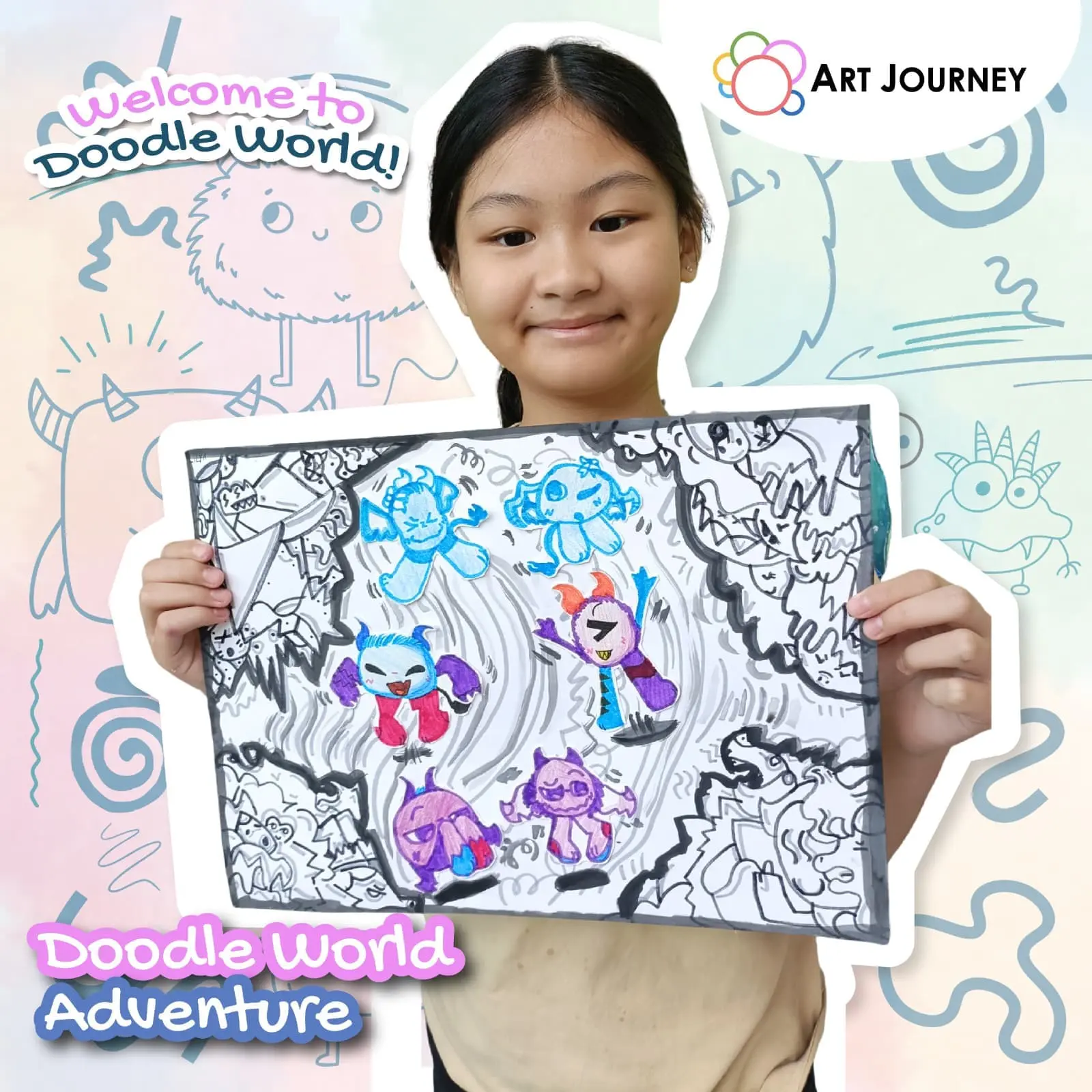
From Scribbles to Masterpieces: How Kids Grow Through Art
Every great artist started with a scribble. Whether it’s a messy swirl of colors or a stick figure family, every drawing tells a story of growth. For children, art is more than a creative hobby — it’s a window into how they think, feel, and understand the world around them.
From their first crayon marks to proudly completing their first mosaic or canvas painting, kids experience an incredible journey of discovery through art. At Art Journey Singapore, these moments of creation are celebrated as essential milestones in every child’s development.
Let’s explore how art transforms kids — step by step — from curious scribblers into confident young creators.
1. The Scribble Stage: Exploring with Joy
At ages 2 to 4, children begin experimenting with shapes, lines, and colors — often without any recognizable form. To adults, these may seem like random scribbles, but they’re actually signs of early coordination and curiosity.
This stage builds fine motor skills as kids learn to hold crayons or brushes and express emotions through movement. The more they draw, the more they develop control and imagination.
At Art Journey, instructors encourage young artists to explore freely — whether it’s splashing colors, tracing hands, or making textured art. These early experiences lay the foundation for future creativity.
2. The Symbol Stage: Making Meaning Through Shapes
Between ages 4 and 6, kids begin to add meaning to their art. A few circles might become a sun and clouds, or a rectangle turns into a house. This is where children start telling stories through pictures.
Through structured art workshops, they learn how to connect imagination with visual thinking. For example, using mosaic tiles to form patterns helps them understand shapes, colors, and composition — all while building focus.
This stage also helps boost language skills as kids describe their creations and share stories behind them.
3. The Realism Stage: Learning Observation and Detail
As children reach 7 to 9 years old, they become more observant of their surroundings. They begin trying to draw things as they “really look” — like people, trees, and animals.
Here, art classes teach them techniques such as proportion, shading, and perspective in a fun, easy-to-follow way. They also learn patience — taking time to refine their work rather than rushing to finish.
At Art Journey, this stage is where confidence blooms. Instructors guide children to experiment with new mediums like acrylic painting, watercolors, or mosaics, helping them bring realism to life in exciting ways.
4. The Expressive Stage: Emotions in Every Stroke
By ages 9 to 12, children use art as a form of emotional expression. Their artwork reflects feelings, dreams, and ideas — whether it’s a bold color choice or a unique composition.
Art becomes a safe outlet to express joy, frustration, pride, or imagination. This emotional growth is one of the most powerful outcomes of consistent art practice.
Workshops at Art Journey are designed to nurture this expressive freedom. Kids are encouraged to create pieces that reflect their identity — helping them understand that there’s no “wrong” way to make art.
5. The Confidence Stage: Creating with Purpose
As kids continue practicing art, they begin to develop self-assurance in their abilities. They no longer just make art for fun — they start doing it to challenge themselves, experiment with techniques, and even impress others.
This sense of achievement builds self-esteem and perseverance. Completing a big canvas painting or a mosaic piece gives children the confidence to take on other challenges in life — academic or personal.
Art Journey celebrates this growth by displaying children’s artworks in exhibitions and studio walls, showing them how much they’ve progressed from those first scribbles.
6. The Social Stage: Collaborating and Sharing Creativity
Art isn’t just a solo activity — it’s also a way to connect with others. Group art sessions and workshops allow children to collaborate, exchange ideas, and learn teamwork.
Working together on murals, mosaic installations, or joint projects teaches kids to respect different perspectives and appreciate collective creativity.
At Art Journey Singapore, group art activities often spark friendships and boost social confidence, especially for shy or introverted kids.
7. The Reflective Stage: Seeing Growth Over Time
When children look back at their old drawings and compare them to what they can do now, they begin to recognize their own creative growth.
Parents often notice how art helps kids become more observant, patient, and expressive over time. These small steps — from color exploration to emotional storytelling — shape their overall personality.
Through consistent art practice, kids learn that growth comes with patience and curiosity — a lesson that extends far beyond the studio.
The Role of Parents in the Art Journey
Parents play a huge role in nurturing creativity. Encouraging kids to express themselves freely, displaying their artwork at home, or joining them in parent–child art sessions can make a big difference.
Instead of focusing on how “good” the artwork looks, celebrate the effort and imagination behind it. This kind of positive reinforcement helps kids stay motivated and proud of their creativity.
Why Choose Art Journey Singapore
Art Journey offers a variety of workshops for all ages — from beginners discovering color and form to more experienced young artists refining their skills.
Each class blends learning and play, creating an environment where kids grow naturally through art — just like how a doodle evolves into a masterpiece.
Every piece they create becomes a memory, a milestone, and a step forward in their artistic and personal development.
Frequently Asked Questions
Q1: What does a child learn from art besides drawing?
Art teaches children observation, problem-solving, communication, and patience. It helps develop both creative and emotional intelligence.
Q2: Why are scribbles important in early childhood art?
Scribbles help toddlers build hand coordination, control, and confidence. They’re the first step toward understanding shapes, colors, and self-expression.
Q3: How can parents encourage artistic growth at home?
Provide a dedicated art corner, offer different materials, and praise creativity instead of perfection. Small actions can inspire lifelong confidence.
Q4: What kind of art classes suit 4–6-year-olds?
Play-based art classes that use simple tools, textures, and colors are best for this age. They promote fun learning and imagination.
Q5: How do art workshops at Art Journey differ from regular classes?
Art Journey focuses on hands-on, child-centered sessions that blend technique with creativity — helping kids learn naturally while enjoying the process.






